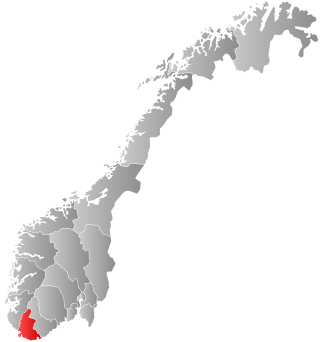
Marnardal is a former municipality in the old Vest-Agder county, Norway. It existed from 1964 until 2020 when it was merged into Lindesnes Municipality in what is now Agder county. It was located in the traditional district of Sørlandet. The administrative centre of the municipality was the village of Heddeland. Other villages in Marnardal include Bjelland, Breland, Koland, Laudal, and Øyslebø.
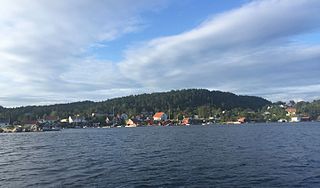
Søgne is a former municipality in the old Vest-Agder county, Norway. The municipality existed from 1838 until 2020 when it was merged with the municipalities of Songdalen and Kristiansand into the "new" Kristiansand municipality in what is now Agder county. It was located in the traditional district of Sørlandet, just outside of the city of Kristiansand. The administrative centre of the municipality was the hamlet of Tangvall. Hamlets and areas in Søgne include Ausviga, Eig, Høllen, Langenes, Lohne, Lunde, Ny-Hellesund, Trysnes, Vedderheia, Ålo, and Åros.
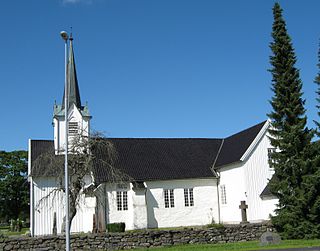
Vestre Moland is a former municipality in the old Aust-Agder county in Norway. The administrative centre of the municipality was the village of Møglestu where the Vestre Moland Church is located. The 103-square-kilometre (40 sq mi) municipality existed from 1838 until 1962 when it was merged into the municipality of Lillesand. Today, the area of Vestre Moland covers the northern part of the present-day municipality of Lillesand in Agder county.

Holum is a former municipality that was located in the old Vest-Agder county in Norway. The 116-square-kilometre (45 sq mi) municipality existed from 1838 until its dissolution in 1964. The administrative centre was the village of Krossen where Holum Church is located. The municipality was located in the present-day municipality of Lindesnes in what is now Agder county.

Tovdal is a former municipality in the old Aust-Agder county in Norway. The 377-square-kilometre (146 sq mi) municipality existed from 1908 until its dissolution in 1967. Tovdal municipality was made up of the valley surrounding the river Tovdalselva and since 1967 it has been a part of the present-day municipality of Åmli which is now in Agder county. The administrative centre of the municipality was the village of Hillestad where the Tovdal Church is located.

Gjøvdal is a former municipality in the old Aust-Agder county in Norway. The municipality existed from 1908 until its dissolution in 1960. It covered the Gjøv river valley and the surrounding moors. It is currently part of the municipality of Åmli in Agder county. The administrative centre was the village of Askland where Gjøvdal Church is located.
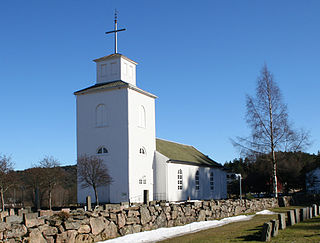
Greipstad is a former municipality in the old Vest-Agder county, Norway. The 104-square-kilometre (40 sq mi) municipality existed from 1913 until its dissolution in 1964 when it became part of Songdalen municipality. The administrative centre of the municipality was the village of Nodeland where the Greipstad Church is located. The municipality is located in the northern part of the present-day municipality of Kristiansand in Agder county.

Grindheim is a former municipality in the old Vest-Agder county, Norway. The administrative centre was the village of Byremo where Grindheim Church is located. The 130-square-kilometre (50 sq mi) municipality existed from 1902 until its dissolution in 1964. It was generally located in the northern part of the present-day municipality of Lyngdal in what is now Agder county.

Sør-Audnedal is a former municipality that was located in the old Vest-Agder county in Norway. The 108-square-kilometre (42 sq mi) municipality existed from 1845 until its dissolution in 1964. It was located in the present-day municipality of Lindesnes in Agder county. The administrative centre was the village of Vigeland where Valle Church is.

Vegusdal is a former municipality in the old Aust-Agder county in Norway. The 325-square-kilometre (125 sq mi) municipality existed from 1877 until its dissolution in 1967. It was located in the northwestern part of the present-day municipality of Birkenes in Agder county. The administrative centre of the municipality was the village of Engesland where Vegusdal Church is located. The Norwegian County Road 405 runs through Vegusdal south to the village of Mosby in Vennesla.

Nes is a former municipality located in the old Vest-Agder county in Norway. The 150-square-kilometre (58 sq mi) municipality existed from 1893 until its dissolution in 1965. The municipality is located in the southwestern part of the present-day municipality of Flekkefjord. Its administrative centre was the village of Nes, located just outside the town of Flekkefjord.
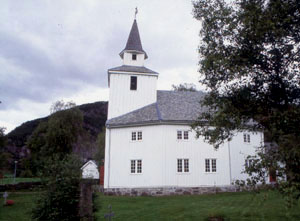
Hylestad is a former municipality in the old Aust-Agder county in Norway. The 570-square-kilometre (220 sq mi) former municipality existed from 1915 until its dissolution in 1962. It was located in the southern part of the present-day municipality of Valle in the traditional region of Setesdal in Agder county. The administrative centre was the village of Rysstad where the Hylestad Church was located.

Gyland is a former municipality in the old Vest-Agder county, Norway. The 182-square-kilometre (70 sq mi) municipality was located in the northeastern part of the present-day municipality of Flekkefjord in what is now Agder county. The municipality existed very briefly from 1838 until 1839 and then it was re-created in 1893 and it existed until 1965. The administrative centre was the village of Gyland where Gyland Church is located.
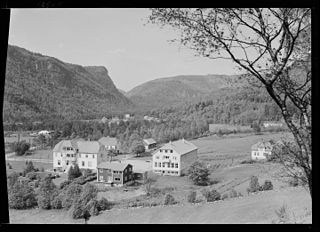
Kvås is a former municipality that was located in the old Vest-Agder county in Norway. The 116-square-kilometre (45 sq mi) municipality existed from 1909 until its dissolution in 1963. The municipality lies in what is now the central part of the municipality of Lyngdal. The administrative centre of Kvås was the village of Kvås where Kvås Church is located. Other villages in the Kvås area are Birkeland and Moi.

Konsmo is a former municipality that was located in the old Vest-Agder county in Norway. The 107-square-kilometre (41 sq mi) municipality existed from 1911 until its dissolution in 1964. The administrative centre of the municipality was the village of Konsmo where Konsmo Church is located. The municipality was located in what is now the municipality of Lyngdal in Agder county.

Bjelland is a former municipality in Vest-Agder county, Norway. The 164-square-kilometre (63 sq mi) municipality from 1902 until 1964 when it was merged into Marnardal municipality. It is now located in the northern part of the present-day municipality of Lindesnes. The administrative centre of the municipality was the village of Bjelland where Bjelland Church is located.

Øyslebø is a former municipality that was located in the old Vest-Agder county in Norway. The 157-square-kilometre (61 sq mi) municipality existed from 1899 until its dissolution in 1964. The administrative centre was the village of Øyslebø where Øyslebø Church is located. Øyslebø municipality was located in part of the present-day municipality of Lindesnes in Agder county.

Finsland is a former municipality in the old Vest-Agder county, Norway. The 118-square-kilometre (46 sq mi) municipality existed from 1838 until its dissolution in 1964. The administrative centre was the village of Finsland where Finsland Church is located. The municipality generally encompassed the northern part of the present-day municipality of Kristiansand in what is now Agder county.

Oddernes is a former municipality that was located in the old Vest-Agder county in Norway. The 103-square-kilometre (40 sq mi) municipality existed from 1838 until its dissolution in 1964. The administrative centre was the village of Lund on the east side of the river Otra near where Lund Church is located. The former area of the municipality makes up the area just west of the urban town of Kristiansand within the municipality of Kristiansand in Agder county. The old municipality encircled the town of Kristiansand, and it included the villages such as Flekkerøy, Vågsbygd, Slettheia, Lund, Strai, Mosby, and Justvik. Today, the town of Kristiansand has a borough named Oddernes, but it has very different boundaries than the old municipality had.

Herefoss is a former municipality in the old Aust-Agder county in Norway. The municipality existed from 1838 until its dissolution in 1967 when it was merged into Birkenes municipality in what is now Agder county. Herefoss was a 148-square-kilometre (57 sq mi) area surrounding the Herefossfjorden. The administrative centre was the village of Herefoss where the Herefoss Church is located. The other main village was Søre Herefoss, located in the southern part of the municipality.

















